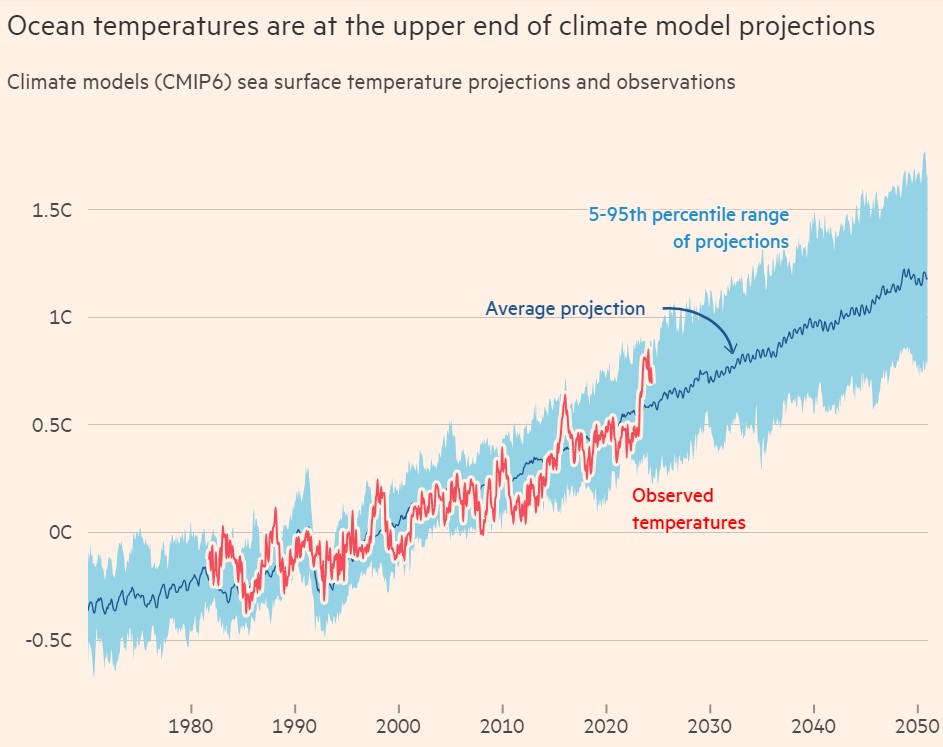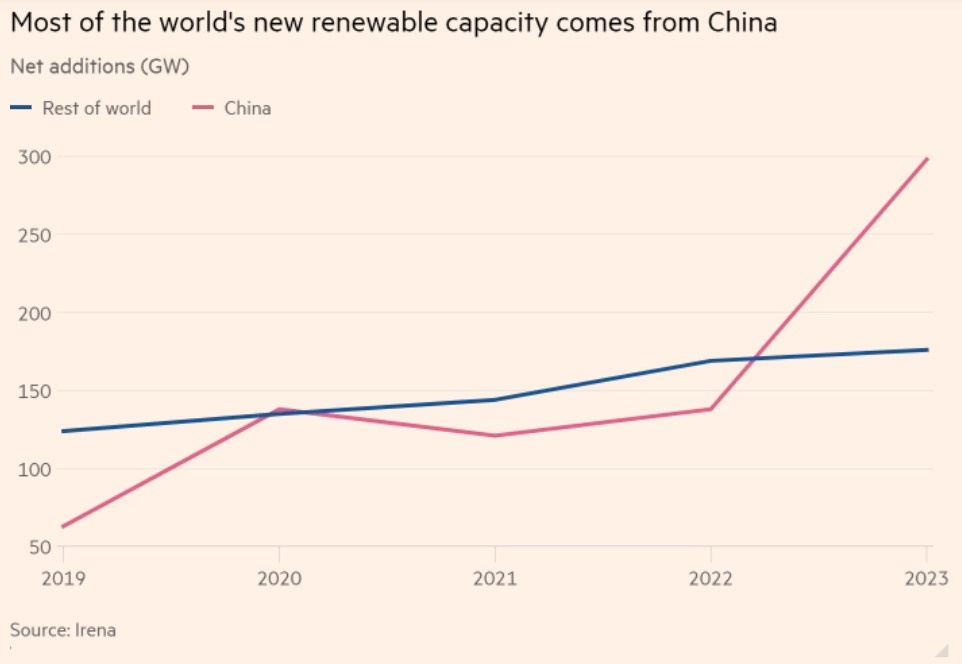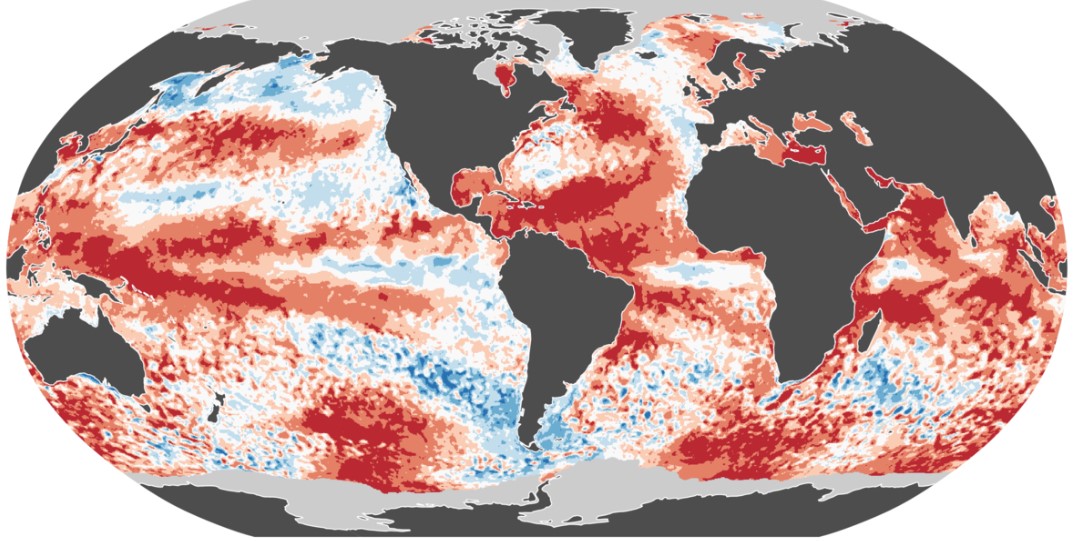By John Pickard
It isn’t difficult to find the key reason for Labour losing so many votes to the Green Party and for the latter to have picked up so many new votes in the general election earlier this month. Nearly two million voted for the Greens in Britain and a large proportion of them will have been young people, who for obvious reasons are the most concerned about climate change and the threat that it poses to civil society in the long run.
Only a couple of weeks after the election, scientists reported the highest-ever average global temperate ever recorded. “What is truly staggering,” one of the scientists told the Guardian, “is how large the difference is between the temperature of the last 13 months and the previous temperature records” The Copernicus Climate Change Service has data going back to 1940 and its director commented, “We are now in truly uncharted territory – and as the climate keeps warming, we are bound to see new records being broken in future months and years.”
Sea temperatures in particular have shocked scientists who have been studying climate change for years. One of them, Matthew England, told the Financial Times that what he has seen in the past 15 months has shocked him. In its feature on the issue, the FT noted that “Global sea surface temperatures have reached and stayed at record levels, fuelling heatwaves and melting sea ice. Temperatures in the north Atlantic waters he has been studying, including around the UK and Ireland, were described last year as “beyond extreme” by the EU’s Earth observation service”.
The pace of change of the climate is not ‘steady’.
We should not assume that climate change will take place smoothly, gradually and evenly, giving time for change and adjustment. England, who is a professor of ocean and climate dynamics in Australia, said he was “stressed” by the figures he’d seen, “…to see the pace of change, to see these marine heatwaves, the loss of sea ice…” The rate of warming went “beyond what you would typically see from steady global warming”. Not ‘steady’ means there could be some periods of gradual change, but interrupted by sudden, dramatic and unprecedented changes.

The recent sea warming has been accentuated by the periodic El Nino affect that originates in the Pacific and ultimately affects all global weather patterns. But the net increase of temperatures are far higher than in previous El Nino events. Higher than normal sea temperatures will have dramatic effects on ocean ecosystems and, as ice sheets on Greenland and Antarctica melt, this will also lead to devastating rises in sea levels.
The question is – and this is the issue that lost Labour so many votes in the election – what are governments doing about climate change, and are they doing enough? In the overwhelming majority of cases, governments and politicians are far behind the curve, and necessarily so, because most of them are in the pockets of big fossil-fuel producing companies, or are themselves running governments heavily dependent for prestige and development on those same industries.
It was Labour rolling back its Green New Deal – which initially was committed to investing £28bn a year in moving over to renewable energy – that lost Labour so many votes. In the last analysis, Labour’s climate change plans are now barely any different to the Tories. Like so many governments, the UK government is way behind its previously-agreed promises on moving to ‘zero-carbon’.
When a cut in greenhouses gases is needed, an increase is expected.
In another article in the Financial Times, Brett Christophers, a professor in the Institute for Housing and Urban Research at Uppsala University, Sweden, argues that there is too much complacency and that there seems to be a commonly-held belief that “the world is finally winning in the energy transition”. But this, he suggests, is most definitely not true.
The UN climate change organisation argues that a transition is indeed in progress. “More than 140 countries, including the biggest polluters – China, the United States, India and the European Union – have set a net-zero target, covering about 88% of global emissions.” But it then explains that by 2023, when a cut in greenhouse gases of 45% is required, there is a projected increase on current trends of 9% by 2030.
There are plans in all of the most advanced countries of capitalism to deploy more renewable energy sources, with growth sometimes even described as ‘exponential’. But the global figures, as Christophers points out, are highly misleading. Although individual governments boast about their plans, he says, “We are emphatically not yet winning, and it is time to stop pretending that we are.”

In particular, he argues, the figures for global renewables growth rates are hugely misleading, because the figures specifically for China completely dwarf the rest of the world.
“In 2023, according to figures published by the International Renewable Energy Agency, China accounted for an extraordinary 63 per cent of global net additions in total renewable capacity — 298 gigawatts of the 473GW total. Even more extraordinary was its share of year-on-year growth in global additions of net capacity, which was 96 per cent”.
The parts of the world most in need of transition invest the least
China is a massive emitter of greenhouse gases, largely due to its huge industrial sector and its continue reliance on coal and oil. But clearly its investment in renewable sources is streets ahead of the western capitalist goverments. “Exclude China”, Christophers argues, “and 2023’s net additions of renewable capacity were a mere 7GW higher than in 2022. Various words could be used to describe such growth, but “exponential” is not one of them”.
Africa and Asia (excluding-China), are probably the regions of the world that have the most pressing need for investment in low-carbon energy sources, where there is likely to be a significant growth in the need for electricity. Yet their current energy sectors are among the world’s most fossil-fuel intensive and they have only limited investment in renewable capacity. “Between 2018 and 2023”, Christophers argues, “annual net additions of renewable capacity grew by a compound annual rate of 10 per cent globally, but only by 5 per cent in Africa. Compare that with 16 per cent in China. The pace of progress is slowest precisely where it is needed most.”
It is patently obvious that young people are most likely to be alarmed by climate change and they will not be fobbed off by platitudes from politicians in suits. Climate change will make itself felt, not in graphs and statistics but in human and economic cost: through weather anomalies, floods, wildfires, rising food prices in in other aspects of social dislocation.
It is too late to keep global temperature rises to 1.5o
As long as fundamental economic decisions – like investment in energy infrastructure – are driven by greed, profit and national prestige – the climate targets set down by various international conferences will come to nothing. We are already beyond the point where we can keep average global temperatures to 1.5oC above pre-industrial levels. That ship has sailed. Humanity is going to struggle now to keep the world temperature rise below 2o or 3o, or worse.
Massively important decisions like these cannot be taken by the same people who have trashed the planet in the past and continue to do it today. Socialist policies, democratic public ownership and the planned use of all basic resources are the only means of saving humanity. Hopefully, workers and youth will become aware of this, so the ‘red’ will merge with the ‘green’. What is certain is that as long as Labour here in the UK sticks to the orthodoxy of capitalism, they will continue to heamorrhage votes to the Greens.
The picture top is from Copernicus and shows anomalies and extremes in see temperatures in June 2024, with different shades of read showing higher than average and blue cooler than average.



